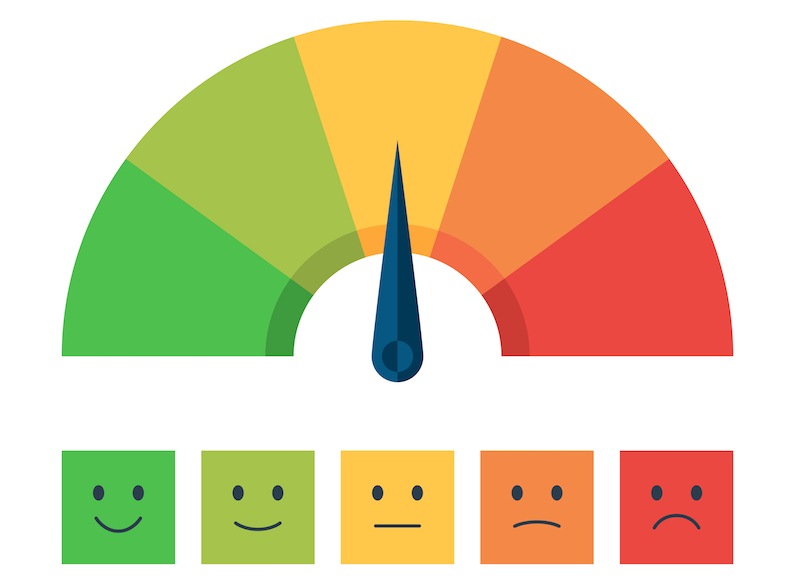Why conduct a local government survey?
Municipalities and local governments are undergoing major changes these years, as the demand for the products and services delivered are ever increasing. With citizens’ rising expectations, the need for measuring citizen satisfaction in a local government survey becomes increasingly important.
The point of performing a local government survey is to capture valid data, that in turn can be used to deliver high quality services to citizens living locally. In order to achieve this, it’s pivotal to capture as true and precise data as possible. However, this may not be as easy as it sounds. Many municipalities don’t even measure citizen satisfaction, but there are good reasons to get started. Others do measure, but are uncertain of how to achieve the best and most accurate feedback. For this reason, we have compiled some advice on how you can improve the quality of a local government survey.
Ask who about what?
The first step is to find out what you want to know, and who you want to ask. This will impact the structure of your survey and where and when you are asking questions. For instance, if you are simply evaluating how the citizens are met, then it’s a great idea to create a survey formulated like statements where the citizen can choose to what extend they agree. When you have decided on who you want to ask and what to ask them, it’s time to focus on how you will get the target group to answer.
Get a high response rate from your citizens
In order to measure your citizen satisfaction, the first thing to focus on is the sheer data collection. There are certain things to consider when you focus on how effectively your survey will harvest data – namely how you design your survey, how you ask your questions, and not least where you ask. Let’s consider the issue of survey placement first: You need to ask you questions in the right place as this will impact the amount of answers you receive massively.

It’s not really rocket science as they say – just some practical things to consider. For instance, it doesn’t make a whole lot of sense to ask a citizen about their experience with their case management while they are waiting in line for their turn. If there’s no relevance then the response rate will inevitably decline. All for the better you might say, because the citizen should have a qualified response for the survey. It’s probably also not a very good idea to place a survey kiosk in a corner, behind a houseplant on the first floor, where absolutely no one is likely to pass by anytime soon.
In order to achieve the most accurate and truthful here-and-now impression, we need to focus on the spot where the citizen is passes by or stays for a period of time. The oldest trick in the book is let the citizen show you themselves. Just observe how they move around in the buildings and then choose where to place the survey from your observations. That will enable you to target the most volume and in turn achieve the highest response rate for your local government survey. Related to this is also the citizens’ readiness to respond.
Placement is both time and place
When the citizen visits his/her local municipality for some reason, they may arrive from an entirely different place mentally. Perhaps they just came from a business meeting, or they just received a parking ticket, from picking up the kids from school. In the midst of that the citizen now needs assistance in citizens’ service. But before this can happen the citizen needs to register, find out where to go, and possibly await their turn. Eventually the citizen will leave the building and attend to whatever comes next that day. In other words, this is a kind of a journey for the citizen, which may even have started when the citizen booked an appointment online?
In order to attract any kind of attention in the midst of this journey, the citizen will demand that your inquiry is relevant. Therefore, the survey needs to be in the right place at the right time. That means in the time and place where the so-called response pain is as low as possible. Elsewhere, we have described what response pain is, but in short, it is the disruption, confusion, irritation or used energy associated with having to answer a survey. Response pain can never be completely eliminated, but will always have to be measured up against the excitement or satisfaction one can experience when voicing one’s opinion.

But when you actually find the ideal time and place to conduct your local government survey – that is after your citizens have had some kind of experience to rate, but before they are mentally and physically on with their daily lives, then that will be the golden, but elusive moment for your survey. This is where the least response pain is felt, and that is why placement is about time and place. In other words, what we are trying to achieve is the following with our survey placement: To ask the right questions to the right citizens and the right time in the citizen journey.
Leave a chance to answer truthfully
Next, we should consider the pivotal moment, when the citizen meets your survey. In other words, the way your questions are presented, how you ask, and how you end the questionnaire. Again, it’s a great idea to consider minimizing their response pain as a guiding principle. At this point they have already agreed to spend energy on responding to your local government survey – now it’s all about getting the citizen to finish the survey and do so with answers that are actually in accordance with their true beliefs.
Here, beliefs refer to eliminating the bias that inhibits human nature, and that makes us easily affected by something. Put differently, if we are annoyed or embarrassed about the questions asked, it may affect our response. It may also be that the citizen doesn’t understand the question (in which case it was probably not very well articulated), or that someone in the mayor’s office was a little too ambitious and put two or three questions into one.
It’s important that that the citizen is seen as a human being, because it signifies that it’s a real person who is asking and not ’the system’. So, when you are designing your local government survey, remember to say ’Hi’, ’Thanks’ and ’goodbye’. Tell them what is going to happen and exactly why their opinion matters.
Ask directly – it’s just less complicated
The way a question is posed is important too. A good rule of thumb is to keep it short! This could sound like the following questions:
“Was the wait time today ok?”
“How satisfied were you with today’s service?”
“How satisfied are you with our self-service solutions?”
“Are you familiar with your municipality’s solutions within XYZ?”
By asking more directly, you will obtain more valid data, that you in turn can use to improve your citizen satisfaction. Previously, we have written about designing great questionnaires, which you can read about here and here.
Many possibilities
Creating a framework, that will improve the quality of your local government survey may not prove difficult. Once you have a good structure in place for how and where you want to survey, then you can start surveying other aspects related to the citizens. For instance, you may use the same system to understand your citizens’ needs. And actually, the possibilities are almost endless, once you have the basic elements in place. All you need is to reflect on how to make the process of answering as convenient as possible. There’s lots to be gained by following a few basic principles, when you are measure citizen satisfaction. Amongst other things you may:
– Achieve a higher response rate than normally
– Get a more robust documentation of the citizen satisfaction
– Get closer to the citizens and their needs
– Get answer to what you really want to know
– Get the opportunity to follow up with unsatisfied citizens
– Signal that your municipality wants dialogue with its citizens
Enjoy measuring your citizen satisfaction!























 There are several reasons why many businesses within the service and retail industry use post-purchase surveys. The practical reasons include: Customer contact data is readily available and hence it’s easy to send off an email.
There are several reasons why many businesses within the service and retail industry use post-purchase surveys. The practical reasons include: Customer contact data is readily available and hence it’s easy to send off an email.